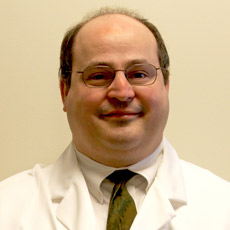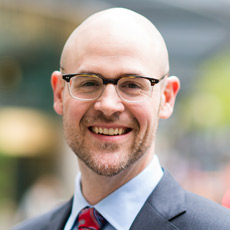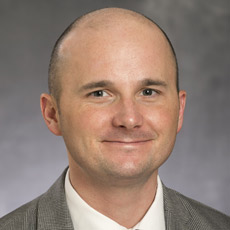
metamorworks/istock via Getty Im
Providing Holistic Preventive Health with Advanced Primary Care
With team-based care, data analytics, and an alternative financing model, advanced primary care is creating the path to preventive health that treats the whole patient.
Primary care has the potential to transform the healthcare industry by improving patient outcomes and reducing overall spend on healthcare services. Study after study shows that value-based care, population health management, chronic disease treatment, and other value-adding activities hinge on the delivery of comprehensive, coordinated primary care.
Yet, fewer patients than ever before have an established primary care provider, according to a study conducted by a group of researchers from Harvard Medical School, Brigham and Women’s Hospital, and Beth Israel Deaconess Medical Center.
“Primary care is the thread that runs through the fabric of all health care, and this study demonstrates we are potentially slowly unweaving that fabric,” David Levine, Harvard Medical School instructor in medicine at Brigham and Women’s Hospital, said in a statement. “America is already behind the curve when it comes to primary care; this shows we are moving in the wrong direction.”
Qualified physicians can be hard to come as the industry stares down a growing physician shortage. But this is especially true for primary care physicians. Approximately 13 percent of US residents, or 44 million people, lived in a county experiencing a primary care physician shortage, according to data from UnitedHealth Group.
However, even when primary care is available, physicians and their team members are finding it difficult to deliver the level of care needed to improve outcomes and lower costs. For example, family physicians surveyed by the American Academy of Family Physicians last year complained about a lack of time and resources, which impacted the quality of conversations they were having with patients.
Researchers from Harvard Medical School, Brigham and Women’s Hospital, and Beth Israel Deaconess Medical Center also criticized the industry’s low reimbursement rates for primary care and the dearth of policies that support primary care infrastructure investments.
The researchers – and many before them – have called on industry leaders to support a shift toward more personalized medicine with increased visit times would allow providers to focus more on the upstream determinants of an individual’s health and prevent chronic disease. They see that path forward starting with advanced primary care.
What is the difference between primary care and advanced primary care?
The advanced primary care (APC) model is the business of whole patient health, according to Stuart Pollack, MD, the medical director of Brigham and Women’s Advanced Primary Care Associates.
“It’s a new design of primary care where instead of being in the visit business, we are in the whole patient business,” he recently told HealthITAnalytics.com.

Overall, the APC model differs from traditional primary care because of its definition of health.
“We think of whole health: social, mental, and physical wellbeing,” Ryan Schmid, MBA, chief executive officer and president of Vera Whole Health, which uses the APC model for all its primary care patients. “Unless you build a care model that’s designed to treat the whole person as opposed to physical disease or infirmity, it’s really not advanced primary care.”
For example, a patient recently diagnosed with type two diabetes will talk with a health coach about their underlying motivations for better health under an APC model, Schmid explained.
“The coach is going to understand that what’s motivating the person is their kid’s wedding or being alive to play with their grandkids,” he said. “This is all in partnership with the provider, but it’s a totally different experience for that patient. The integration piece is super critical.”
A large piece of creating a holistic approach to patient care requires delivering empathy towards patients, added Kyle Grunder, MBA, director of provider operations and program development Courage Kenny Rehabilitation Institute at Allina Health. At Courage Kenney, the APC model is for specific patient populations, such as those with a neurologic deficit, neurological impairment, or mobility impairment.
“What we’ve been able to do is form a bond with these patients so we’re their first call,” Grunder said. “They entrust us with their care, and we take that seriously. In creating that really close bond, confidence, and trust you have an ideal patient experience.”
A system of trust creates strong patient-provider relationships. Patients who make their primary care provider their first call are more likely to stay out of the emergency department, receiving less fragmented care and reducing care costs.
But for organizations to realize the benefits of APC, they need to implement a team-based care approach, data analytics tools, a social determinants of health strategy, and a new financial model.
Care team approach
Creating care teams is a pillar of the APC model. The team-based approach allows the entire team to work towards bettering patients’ health, addressing their medical, behavioral, and social determinant of health needs.
“Most primary care physicians are sophisticated enough to recognize that you can’t really provide good primary care without a team,” said Pollack.
Vera, Brigham, and Courage Kenny’s care teams are all unique. However, these teams are typically centered around a physician, nurse or advanced practice provider, and a medical assistant. Depending on the care model and the needs of the patient, these teams can also include behavioral health specialists, health coaches, pharmacists, nutritionists, social workers, and other healthcare professionals.
Who is on the care team in an APC model will depend on patient mix at the practice.
“The team for our Medicare population is going to look different than the team for our commercial population,” Schmid explained. ”You could certainly extend that team depending on the population and the degree to which you want to bring in certain specialists.”
The patient population should also dictate how care team members interact and deliver care.

“That care team has to be specifically built to target specific populations,” Schmid continued. “It’s not enough to throw a bunch of folks wearing different hats in the same building. They have to be functioning off the same care plan for individual members and offer a broader population health strategy for whichever population they’re serving.”
In Brigham’s model, the medical assistants are responsible for conducting initial screenings with the patient such as behavioral health, domestic violence, and depression. Information from this screening is then passed on to the rest of the team to coordinate further care.
“We expect the medical assistants to start looking at the real-time overdue health maintenance items and tee the patient up for the physicians,” Pollack said. “There’s more work to be done but we’re trying to spread it out over the entire team.”
Tailored care teams are key to accomplishing one of the overarching goals of the APC model: coordinating care.
“The advanced primary care team is in the quarterback seat with the patient as opposed to the patient getting sucked up into specialty land where there are multiple specialists managing their care,” said Schmid.
Brigham and Women’s Advanced Primary Care Associates also coordinates care on site. For example, a patient newly diagnosed with diabetes will see a pharmacist for insulin and a nutritionist to go over healthy eating habits on site at the point of diagnosis.
Rather than wait weeks between appointments and risking disjointed care, all of the patients’ needs are coordinated or delivered on sites. Patients are then set up to successfully adhere to care recommendations.
“It’s more of a one-stop-shop. Patients can get their lab work done, walk away with their prepackaged medication, and in some cases, get imaging done. They can meet with the health coach and the behavioral health consultant under one roof,” said Schmid. “It’s an infinitely better experience.”
Relying on a team of providers also supports longer care visits, which are another pillar of the APC model.
“We have extended visit length, so most patients are seen in a 60-minute window versus a traditional primary care model where appointments are between 15 and 30 minutes,” Grunder explained.
Emphasis on data and analytics
The care team needs actionable data to provide insights and direct the best care possible.
Traditionally, actionable data meant identifying high-risk patients and connecting them to high-quality care quickly. But this is not enough under the APC model.
“The traditional population health risk pyramid of low risk, rising risk, and high risk are too static for a true advanced primary care solution,” said Schmid. “You have, for example, a rising risk person with depression and diabetes who, unless you take further preventive action, may end up developing additional chronic conditions. Understanding where folks are in real-time and having specific care models designed to treat those people is what we mean by a population health strategy.”
Sophisticated data and analytics can inform population health strategies.
“We’re as much a digital company as we are a healthcare company,” Schmid explained “You have to ingest a ton of data, mash it together, and then spit out hyper actionable data to people who understand what to do with it. Information is useless unless it’s actionable and to be actionable folks have to understand it.”
To make all this data actionable, Brigham and Women’s Advanced Primary Care Associates uses algorithms to identify patients best suited for their care delivery model. But “everyone else is identified based on what they need at the moment,” Pollack noted. So, real-time data and analytics are also critical.
Data and analytics also demonstrate effective cost savings. For Grunder at Courage Kenny, this helps grant applications and donor relations.
"We were able to create a database of all the claims costs for our patients and marry that with our clinical informatics to have a true picture of how much these individuals are spending," he noted. "We found through our data analytics that on a year by year basis, we were saving just Medicaid fee-for-service patients enrolled in our clinic an upwards of $1.5 to 2 million per year."
Focus on social determinants of health
Providers cannot furnish holistic care without addressing social determinants of health. Factors such as the environment, socioeconomic status, and access to healthy food options account for 60 percent of an individual’s health.
That means while most patients come into the clinic with a physical condition, there is often an underlying psychosocial theme that contributes to the physical condition, Schmid explained.
“Unless you really have a model with the time and resources to support the patient, you’re just putting a Band-Aid on things,” he furthered.
The APC model, however, can help primary care practices develop the resources needed to identify and treat all the factors impacting patient outcomes and spending, the industry experts agreed.
Particularly, the team-based care model of advanced primary care encourages addressing these factors by various members of the team.

“So much of managing this patient population is navigating the healthcare system, which you don’t need a physician to do,” Grunder emphasized. “The physicians in our model are focusing on the patients that are in a tough spot and need to be seen. They’re not spending their time making sure a patient is food secure. We have other team members doing that.”
One of the most overlooked social determinants of health is the accessibility of healthcare. An inaccessible system, regardless of its quality, can lead to delayed and disjointed care. Extending visit times and managing all aspects of care can help overcome these challenges and make the patient less intimidated by the healthcare system.
"If you can immediately get roomed and then all services come to the member as opposed to making them walk around, it's infinitely more consumer-centric," Schmid explained. "The unsolicited feedback that we receive is that this is the first time patients ever truly felt heard by their doctors or care team."
Courage Kenny takes accessibility one step further, ensuring their patients have no physical barriers to entering the clinic doors.
“Part of the reason why the clinic is unique and different is that we are structurally and physically set up to take care of some of the most complex patient populations,” noted Grunder.
The APC model elevates primary care by enabling providers to deliver coordinated, preventive care that treats the whole patient, not just his physical conditions. But providers can only achieve these goals by implementing a financial model alongside the APC model.
Financial alignment
The traditional healthcare financing system does not support the APC model, industry experts agreed.
"The way that the fee-for-service financial model works is physicians are actually incentivized to not provide the care and refer out because it can be done and charged more somewhere else in the system. From an intrinsically motivated primary care provider standpoint, it's really, really disheartening," noted Schmid.
With fee-for-service still being the dominant revenue stream for provider organizations, the APC model may not be gaining the traction experts have hoped for.
“Our financial model is not one that is sustainable in a fee-for-service environment,” Grunder explained. “Most clinic models do not have the funding mechanism or the drive to add in lay healthcare workers to support the clinician because they’re still in a fee-for-service environment. They’re more driven to see patients frequently than to manage them outside of the visit.”
That means organizations cannot do even the most basic APC capabilities, such as emailing the patient and coordinating care over the phone whenever possible.
"Frankly, there's no financial incentive to bring somebody in if you can help them over the phone, video, or even messaging," noted Schmid.
Such a system requires strong financial backing and alignment of financial incentives across all aspects of the system, Schmid added.
“In our world, that means the patient, the care teams, the company, and then whomever we’re contracting with,” he said. “Unless everybody has the same financial goals in mind, you’re just recreating some version of a sick care fee-for-service world.”
Without financial alignment across payers and providers, grants and donations are keeping the APC model alive at organizations like Courage Kenny.
“We have largely survived over the last five years by grants and demonstration projects. We were part of the CMS innovation grant and received a grant from CMS to run the clinic. We’ve had support from our Courage Kenny Foundation,” he reported.
However, Grunder stressed that this APC financing model is not sustainable. Fortunately, payers and providers are starting to see the value in switching their revenue sources to deliver better primary care.
Innovative payment mechanisms are quickly taking off to support these care models, including the Center for Medicare and Medicaid’s Comprehensive Primary Care Plus. The goal of the model is to increase access to care while improving the quality and efficiency through advanced primary care methods. It aims to do that by paying participants a non-visit-based care management fee paid per-beneficiary-per-month. Participants can also earn value-based incentive payments based on their performance on quality metrics.
Similar models are starting to crop up across the industry, too. The Health Care Payment Learning & Action Network recently reported that the number of healthcare payments made through an alternative payment model increased to 35.8 percent in 2018.
The industry is slowly transitioning to a more sustainable payment model for APC. But being in the patient business is worth it.
“It’s the right thing to do for patients and it’s the right thing to do for society,” Pollack concluded.





